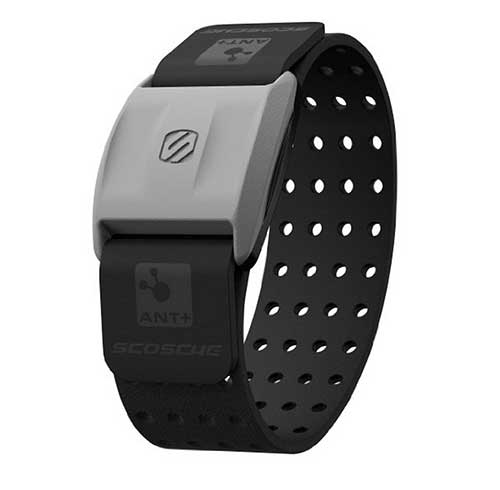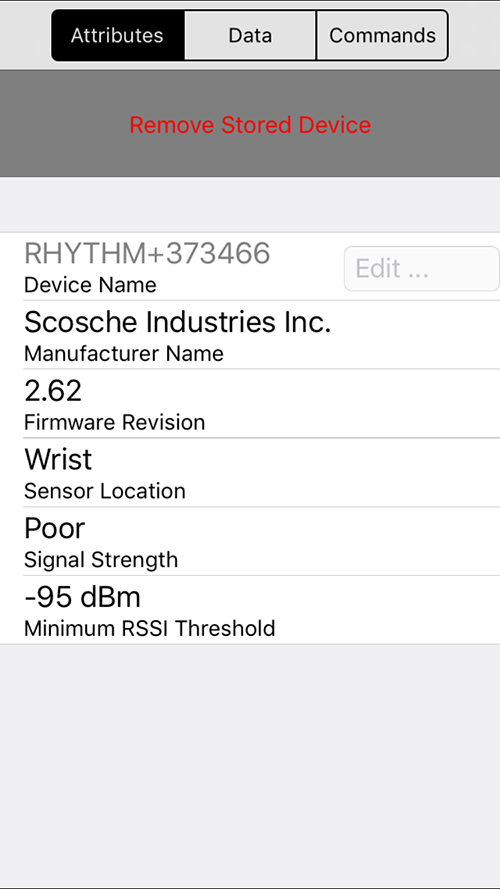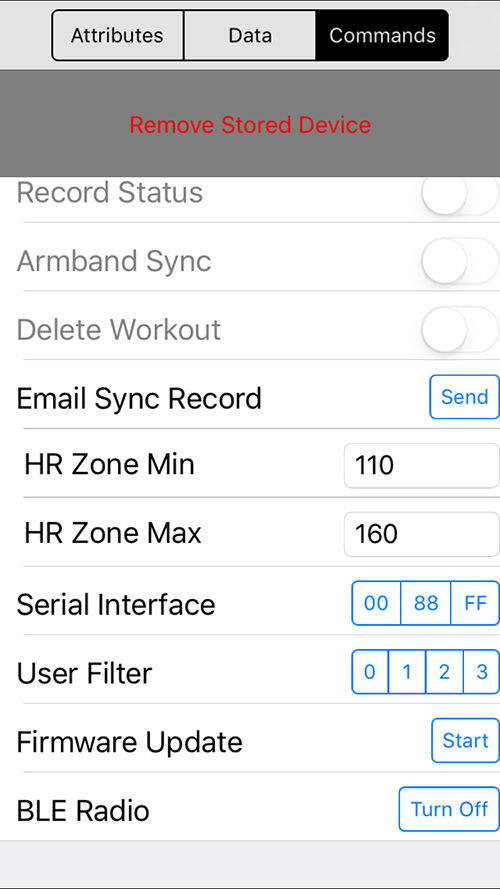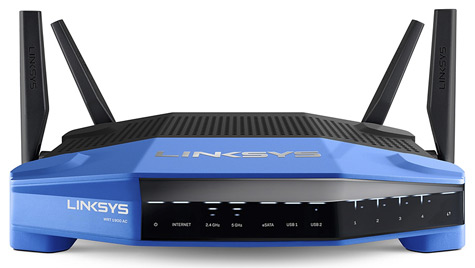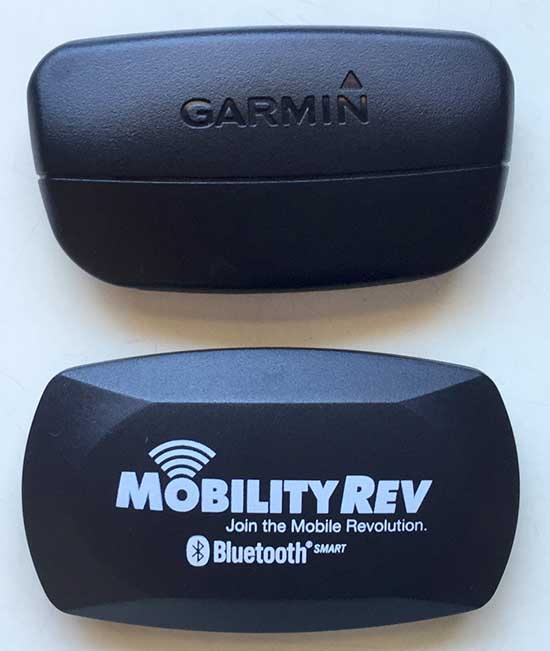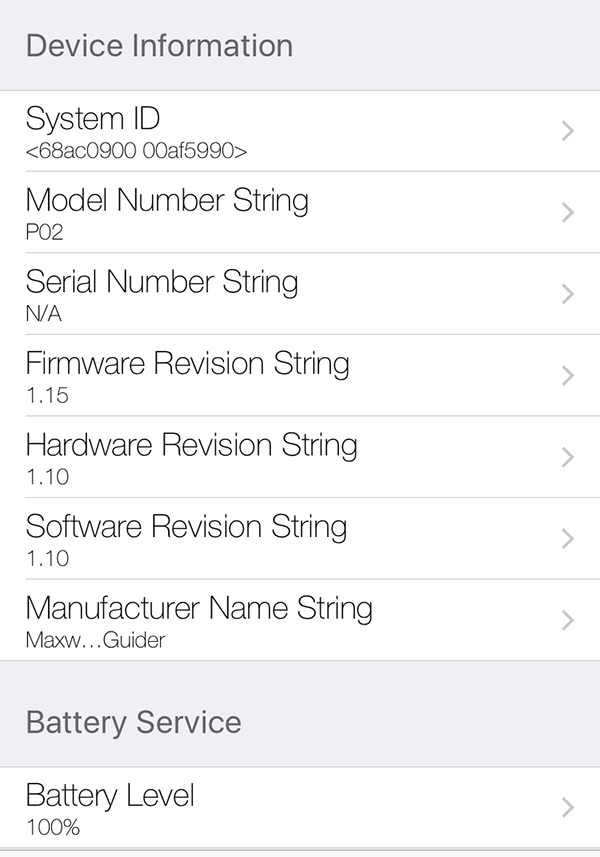The Scosche Rhythm+ is an optical BLE/ANT+ armband heart rate monitor that’s highly recommended by DC Rainmaker. There are many posts around the Internet which claim that it doesn’t have updateable firmware, but that’s not always the case. Prior to firmware V2.5, the Rhythm+ had to be sent back to Scosche for firmware updates, but if you’re lucky to have firmware 2.5+ installed, you can update the firmware yourself with your phone and Scosche’s Fitness Utility.
*** WARNING WARNING READ BEFORE UPDATING: Read all of the updates at the bottom of this article before attempting a firmware update. Sometimes, a unit has gotten bricked by the procedure, but apparently, it has been fixed in Version 2 of the app. Also, read the comments left by other users. It seems that the data in the newer firmware 3.0+ also causes issues with data corruption in certain apps. Before starting a firmware update, make sure that your device is fully charged, because it can be rendered unusable if the battery dies during the procedure ***
The procedure is quick and easy. Pair the Rhythm+ to your phone and launch the Fitness Utility. You will be presented with the Attributes screen, which lists the current firmware version:
If you have Firmware Revision 2.5 or higher, tap the Commands button, and you’ll be presented with this screen:
Tap the Firmware Update Start button, and the utility will update you to the latest firmware.
I got a nice new feature when I upgraded mine to firmware 2.62. Now, after setting my HR Zone Min and HR Zone Max via the Fitness Utility, the LED on the Rhythm+ blinks blue when my HR is below HR Zone Min, purple when I’m between HR Zone Min & Max, and red when I’m above HR Zone Max. I guess if you only use ANT+, and want to save some battery life, you can turn off the BLE Radio as well, but I haven’t tried playing with any of the other functions yet, and I have no idea how you would turn BLE on again, since the app communicates via BLE.
Update 2016-07-11: Reader Atle posted below that v2.62 adds another function for iOS users … click the button on the unit once to start/stop music, and double click to advance tracks in the playlist. I wonder if this works on Android, as well.
*** 20170327: WARNING: I HAVE RECEIVED MULTIPLE REPORTS OF THEIR UNITS WITH NEWER FIRMWARE GETTING BRICKED BY APPLYING THE FIRMWARE UPDATE. IF YOU HAVE A UNIT WITH NEWER FIRMWARE >2.62, APPARENTLY, THE UTILITY IS BADLY DESIGNED, OR HASN’T BEEN UPDATED IN A LONG TIME, AND CAN CORRUPT UNITS WITH NEWER FIRMWARE. AT THIS TIME, I *DO NOT* RECOMMEND UPDATING YOUR UNIT IF IT HAS NEWER FIRMWARE. IF YOUR UNIT GETS BRICKED, CONTACT SCOSCHE CUSTOMER SUPPORT … IT IS THEIR FAULT IF THEIR SOFTWARE BRICKS YOUR UNIT ***
** 20170509: A reader below said: “If you see blinking Red-blue led so seems like bricked but don’t be upset just put on charge unit and the device will be reset.” Please leave a comment below if it works to resurrect your bricked unit ***
Update 2017-06-16: As reader Occamsrazor states below, the Fitness Utility has been updated to Version 2. The description on iTunes shows that it has some new features, but it’s rather cryptic. I was able to use it to update my 2.62 FW to 3.01. You no longer have to press a firmware upgrade button. If your unit is eligible for updating the firmware, it will automatically prompt you when you connect your device. The new app has several new undocumented functions. I tried to enter my birthday, height, etc, but it doesn’t seem to work. If anyone figures out the advanced features, please post below. Apparently, it’s possible to record a workout in the band itself, and then export a CSV file, but I can’t get any of the functionality to work. Also, there are some reports that the new version is a lot less likely to brick your unit, but YMMV. It worked OK for me.
Update 2018-01-09: 1) I’m not absolutely certain, but I feel that my Rhythm+ has gotten flaky since updating to v3.01 firmware. The heart rate is often very low or very high. I decided to try downgrading my firmware. If you are having issues, and want to try a different version of firmware, I have documented how to downgrade in a new article: HowTo: Downgrade Scosche Rhythm+ Firmware. 2) I was wrong above. You don’t need v2.62 firmware to get the feature that setting the Min & Max heart rates make your LED flash purple/blue/red when the heart rate is below Min/in between Min & Max/Max HR. v2.4 firmware actually supports that feature.
Next article: HowTo: Downgrade Scosche Rhythm+ Firmware
